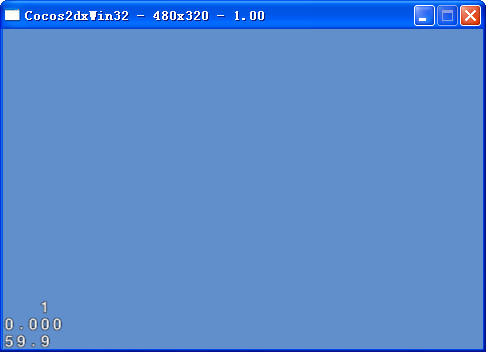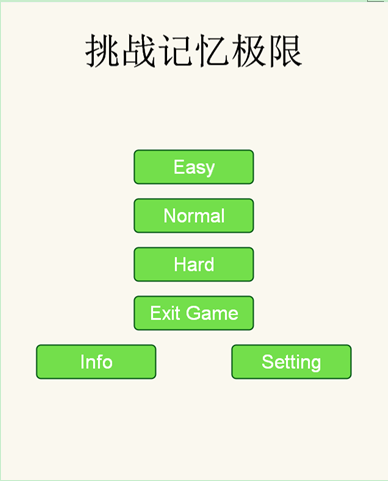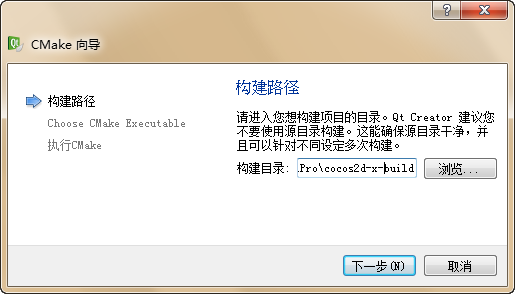原文:http://www.jb51.cc/article/p-knqxbngo-wx.html
1、创建方式
/**
* Vec2只有两个成员变量x,y
*/
float x; //X坐标
float y; //Y坐标
/**
* 构造函数
*/
Vec2(); //(0,0)
Vec2(float xx,float yy); //(xx,yy)
Vec2(const float* array); //(array[0],array[1])
Vec2(const Vec2& copy); //copy
Vec2(const Vec2& p1,const Vec2& p2); //p2 - p1
void set(float xx,float yy); //(xx,yy)
void set(const float* array); //(array[0],array[1])
void set(const Vec2& v); //v
void set(const Vec2& p1,const Vec2& p2); //p2 - p1
/**
* 向量运算
* void : 自身运算,值会改变
* 有返回值 : 返回运算结果,值不会改变
*/
void add(const Vec2& v); //相加( x+v.x,y+v.y )
void subtract(const Vec2& v); //相减( x-v.x,y-v.y )
void clamp(const Vec2& min,const Vec2& max); //将向量值限制在[min,max]区间内
void negate(); //向量取负( -x,-y )
void normalize(); //标准化向量. 若为零向量,忽略
void scale(float scalar); //x,y坐标同时放缩
void scale(const Vec2& scale); //x,y坐标分别放缩
void rotate(const Vec2& point,float angle); //绕point点,旋转angle弧度
float dot(const Vec2& v) const; //点积: x*v.x + y*v.y
float cross(const Vec2& v) const; //叉积: x*v.y - y*v.x
Vec2 project(const Vec2& v) const; //投影: 向量在v上的投影向量
float distance(const Vec2& v) const; //与v的距离.
float distanceSquared(const Vec2& v) const; //与v的距离平方.
float length() const; //向量长度. 即与原点的距离
float lengthSquared() const; //向量长度平方. 即与原点的距离平方
Vec2 getnormalized() const; //获取向量的标准化形式. 若为零向量,返回(0,0)
inline Vec2 getPerp() const; //逆时针旋转90度. Vec2(-y,x);
inline Vec2 getRPerp() const //顺时针旋转90度. Vec2(y,-x);
inline float getAngle() const; //与X轴的夹角(弧度)
float getAngle(const Vec2& v) const; //与v向量的夹角(弧度)
inline Vec2 getMidpoint(const Vec2& v) const; //计算两点间的中点
//将向量值限制在[min,max]区间内,返回该点
inline Vec2 getClampPoint(const Vec2& min,const Vec2& max) const
{
return Vec2(clampf(x,min.x,max.x),clampf(y,min.y,max.y));
}
bool isZero() const; //是否为(0,0)
bool isOne() const; //是否为(1,1)
//判断target是否在坐标点模糊偏差为var的范围内.
//if( (x - var <= target.x && target.x <= x + var) &&
// (y - var <= target.y && target.y <= y + var) )
// return true;
bool fuzzyEquals(const Vec2& target,float variance) const;
//以pivot为轴,逆时针旋转angle度(弧度)
Vec2 rotateByAngle(const Vec2& pivot,float angle) const;
//绕other向量旋转
//返回向量: 角度 this.getAngle() +other.getAngle();
// 长度 this.getLength()*other.getLength();
inline Vec2 rotate(const Vec2& other) const {
return Vec2(x*other.x - y*other.y,x*other.y + y*other.x);
};
//绕other向量旋转前的向量值
//返回向量: 角度 this.getAngle() -other.getAngle();
// 长度 this.getLength()*other.getLength();
//(这里是不是有点问题,难道不应该是this.getLength()/other.getLength()么?)
inline Vec2 unrotate(const Vec2& other) const {
return Vec2(x*other.x + y*other.y,y*other.x - x*other.y);
};
//两个点a和b之间的线性插值
//alpha ==0 ? a alpha ==1 ? b 否则为a和b之间的一个值
inline Vec2 lerp(const Vec2& other,float alpha) const {
return *this * (1.f - alpha) + other * alpha;
};
//平滑更新向量的当前位置,指向目标向量target.
//responseTime定义了平滑时间量,该值越大结果越平滑,相应的延迟时间越长。
//如果希望向量紧跟target向量,提供一个相对elapsedtime小很多的responseTime值即可。
//参数
//target 目标值
//elapsedtime 消逝时间
//responseTime 响应时间
void smooth(const Vec2& target,float elapsedtime,float responseTime);
/**
* 自定义运算
* compOp
*/
//对该点向量形式的各分量进行function参数来指定的运算,
//如absf,floorf,ceilf,roundf等,
//任何函数拥有如下形式:float func(float)均可。
//例如:我们对x,y进行floor运算,则调用方法为p.compOp(floorf);
//3.0
inline Vec2 compOp(std::function<float(float)> function) const
{
return Vec2(function(x),function(y));
}
/**
* 兼容代码
* 估计是要被抛弃了~(>_<)~
*/
void setPoint(float xx,float yy); //同set(float xx,float yy)
bool equals(const Vec2& target) const; //同==
float getLength() const; //同length()
float getLengthSq() const; //同lengthSquared()
float getdistance(const Vec2& other) const; //同distance(const Vec2& v)
float getdistanceSq(const Vec2& other) const; //同distanceSquared(const Vec2& v)
4、运算符重载
inline const Vec2 operator+(const Vec2& v) const; //( x+v.x,y+v.y )
inline const Vec2 operator-(const Vec2& v) const; //( x-v.x,y-v.y )
inline const Vec2 operator*(float s) const; //( x*s,y*s )
inline const Vec2 operator/(float s) const; //( x/s,y/s )
inline const Vec2 operator-() const; //( -x,-y )
inline Vec2& operator+=(const Vec2& v); //(x,y) = ( x+v.x,y+v.y )
inline Vec2& operator-=(const Vec2& v); //(x,y) = ( x-v.x,y-v.y )
inline Vec2& operator*=(float s); //(x,y) = ( x*s,y*s )
inline bool operator<(const Vec2& v) const;
inline bool operator==(const Vec2& v) const;
inline bool operator!=(const Vec2& v) const;
5、静态函数与常量
/** * 静态方法 */ static void add(const Vec2& v1,const Vec2& v2,Vec2* dst); //dst = v1 + v2 static void subtract(const Vec2& v1,Vec2* dst); //dst = v1 - v2 static void clamp(const Vec2& v,const Vec2& min,const Vec2& max,Vec2* dst); //将向量v限制在[min,max]区间内,结果存入dst static float angle(const Vec2& v1,const Vec2& v2); //两向量夹角(弧度) static float dot(const Vec2& v1,const Vec2& v2); //两向量点积 static inline Vec2 forAngle(const float a); //返回向量坐标 x=cos(a),y=sin(a) /** * 静态常量 */ static const Vec2 ZERO; //Vec2(0,0) static const Vec2 ONE; //Vec2(1,1) static const Vec2 UNIT_X; //Vec2(1,0) static const Vec2 UNIT_Y; //Vec2(0,1) static const Vec2 ANCHOR_MIDDLE; //Vec2(0.5,0.5) static const Vec2 ANCHOR_BottOM_LEFT; //Vec2(0,0) static const Vec2 ANCHOR_TOP_LEFT; //Vec2(0,1) static const Vec2 ANCHOR_BottOM_RIGHT; //Vec2(1,0) static const Vec2 ANCHOR_TOP_RIGHT; //Vec2(1,1) static const Vec2 ANCHOR_MIDDLE_RIGHT; //Vec2(1,0.5) static const Vec2 ANCHOR_MIDDLE_LEFT; //Vec2(0,0.5) static const Vec2 ANCHOR_MIDDLE_TOP; //Vec2(0.5,1) static const Vec2 ANCHOR_MIDDLE_BottOM; //Vec2(0.5,0)
/**
线段相交检测 v3.0
参数:
A 为线段L1起点. L1 = (A - B)
B 为L1终点 . L1 = (A - B)
C 为线段L2起点. L2 = (C - D)
D 为L2终点 . L2 = (C - D)
S 为L1上计算各点的插值参数,计算方法为:p = A + S*(B - A)
T 为L2上计算各点的插值参数,计算方法为:p = C + T*(D - C)
*/
//直线AB与线段CD是否平行
static bool isLineParallel(const Vec2& A,const Vec2& B,const Vec2& C,const Vec2& D);
//直线AB与线段CD是否重叠
static bool isLineOverlap(const Vec2& A,const Vec2& D);
//直线AB与直线CD是否相交
static bool isLineIntersect(const Vec2& A,const Vec2& D,float *S = nullptr,float *T = nullptr);
//线段AB与线段CD是否重叠
static bool isSegmentOverlap(const Vec2& A,Vec2* S = nullptr,Vec2* E = nullptr);
//线段AB与线段CD是否相交
static bool isSegmentIntersect(const Vec2& A,const Vec2& D);
//返回直线AB与直线CD的交点
static Vec2 getIntersectPoint(const Vec2& A,const Vec2& D);
class CC_DLL Size
{
/**
* Size只有两个成员变量width,height
*/
float width; //宽
float height; //高
/**
* 构造函数
*/
Size(); //(0,0)
Size(float width,float height); //(width,height)
Size(const Size& other); //other
explicit Size(const Vec2& point); //(显式)构造函数. 构造时Size size = Size(Vec2&),而不能Size size = vec2;
/**
* 相关操作
* - setSize
* - equals
* - Vec2()
*/
void setSize(float width,float height); //设置尺寸
bool equals(const Size& target) const; //判断是否等于target
//Size::Vec2()
//返回类型为Vec2
operator Vec2() const { return Vec2(width,height); }
/**
* 静态常量
*/
static const Size ZERO; //(0,0)
/**
* 运算符重载
*/
Size& operator= (const Size& other);
Size& operator= (const Vec2& point); //可以用Vec2赋值
Size operator+(const Size& right) const;
Size operator-(const Size& right) const;
Size operator*(float a) const;
Size operator/(float a) const;
};
1、主要函数如下
class CC_DLL Rect
{
public:
Vec2 origin; //起始坐标: 矩形左下角坐标
Size size; //尺寸大小
/**
* 构造函数
*/
Rect();
Rect(float x,float y,float width,float height);
Rect(const Rect& other);
/**
* 运算符重载
* 只重载了 “=” 运算符
*/
Rect& operator= (const Rect& other);
/**
* 相关操作
* - setRect
* - getMinX,getMidX,getMaxX
* - getMinY,getMidY,getMaxY
* - equals,containsPoint,intersectsRect
* - unionWithRect
*/
//设置矩形
void setRect(float x,float height);
//获取矩形信息
float getMinX() const; //origin.x
float getMidX() const; //origin.x + size.width/2
float getMaxX() const; //origin.x + size.width
float getMinY() const; //origin.y
float getMidY() const; //origin.y + size.height/2
float getMaxY() const; //origin.y + size.height
//判断是否与rect相同. 原点相同,尺寸相同.
bool equals(const Rect& rect) const;
//判断point是否包含在矩形内或四条边上
bool containsPoint(const Vec2& point) const;
//判断矩形是否相交. 常常用作碰撞检测.
bool intersectsRect(const Rect& rect) const;
//与rect矩形合并. 并返回结果. v3.0
//不会改变原矩形的值
Rect unionWithRect(const Rect & rect) const;
/**
* 静态常量
* Rect::ZERO
*/
static const Rect ZERO;
};




